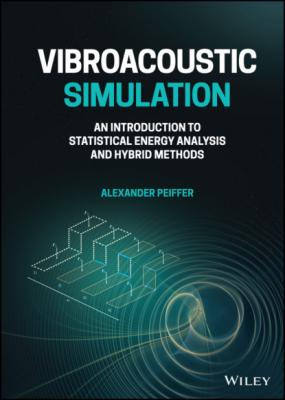Vibroacoustic Simulation. Alexander Peiffer
Чтение книги онлайн.
Читать онлайн книгу Vibroacoustic Simulation - Alexander Peiffer страница 28

A system is called causal (and this is definitely the case for any mechanical system) when the impulse response is zero at times smaller than zero (it can only react when it has experienced an excitation), so
That means we can rearrange the integration limits as follows:
All those forms are convolution integrals according to (1.46) and the response can be written as
So, with this function we can express any response of a linear system using the above convolution integral. When considering a unit frequency excitation F(ω)=1 Equation (1.173) shows that the response equals the transfer function.
The inverse Fourier transform of the unit spectrum ejωt0=1 for t0=0 is the delta function δ(t) according to (1.32). In the time domain this reads as the following convolution integral
We see that the transfer function in time domain is the response of the system to a delta function. Consequently, this function is called the impulse response of the system. When we calculate the inverse Fourier transform of the frequency response function of the damped harmonic oscillator we get as impulse response function
This is the solution of the following equation of motion
which corresponds to the solution of the homogeneous version in (1.1) for the following initial conditions
Finally, with the definition of system response functions in time and frequency domain, there is a powerful description available. This will be used in Section 1.6.3 in order to describe the system response to random signals.
1.6.3 Systems Excited by Random Signals
We know from section 1.5.4 that the random signal cannot be Fourier transformed. As a consequence we apply the correlation methods from above to the output of a system excited by random signals. We start with the autocorrelation of the system output g from excitation by random input f
The impulse response can by taken out from the expected value operation, because it does not depend on the time. Hence we get
When we assume a retarded time argument of τ′=τ+τ1−τ2 the expected value can be interpreted as the autocorrelation of f(t). With this assumption we get:
The term in the rectangular brackets can be seen as the convolution with argument (τ+τ1).
By replacing τ1 by −u this reads as